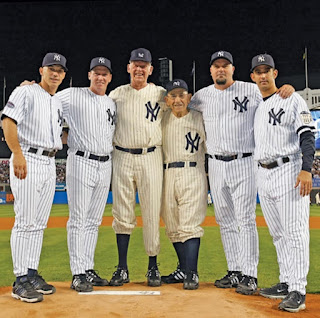The Angels are a team that had a bit of an identity crisis at one time. Initially the Los Angeles Angels, they switched to the California Angels. The California identity lasted for a good 30 years before they decided to scale back from the entire state to just the LA metro area they call home. With that name change would come a change in uniform and logo. Within 10 years, they'd change their look and logo again, and separately the name; becoming the Los Angeles Angels of Anaheim. That mouthful of a name lasted way too long before they finally decided on being the Los Angeles Angels.
1997 is when the whirlwind of changes began. In addition to becoming the Anaheim Angels, they would debut the most unique uniforms of their time. Jersey vests were the norm and the logo would feature periwinkle blue. The logo would also be the only variant in the entire history of the Angels to not feature a halo, instead going for angel wings. As much as I prefer the old school California Angels name and look, the Angels from 1997-2001 with this look stood out easily and is a much more preferred look to the somewhat "meh" look they have now that doesn't stand out in the league.
The season itself was a frustrating 2nd place finish in the AL West at 84-78, 6 games behind the Seattle Mariners. The Wild Card was even more out of reach, with the New York Yankees finishing 12 games ahead of Anaheim. Manager Terry Collins kept the Angels involved for the division until the home stretch, which wasn't half bad in his first season at the helm.
The Angels have a thing for fish named players being the heart of their offense. In 1997, the fish man was Tim Salmon. His 33 Home Runs and 129 RBI were tops on the team. He was the lone guy to get MVP votes, finishing 7th.
Patrolling that outfield with Salmon was Gold Glove winner Jim Edmonds. This would be the first of 8 Gold Glove seasons.
Yeah, Disarcina was bad, but every Showdown fan has a soft spot for the 2000 starter set original. With tongue firmly in cheek, we all refer to him as a legend.
Other starters. The regular lineup was a very fluid thing in '97. Murray wouldn't be long for Anaheim and would be gone before long, while Kreuter would be acquired to be the regular behind the plate.
Garret Anderson was the only regular hitting over .300 with his .303 Average.
That's 5 Catchers on the bench if you're counting. Encarnacion played in just 11 games, so that limited playing time explains how he pulled off his nice card. Todd Greene continuing with that high power/low on-base that we're all used to seeing, but with a way more agreeable card than the 2000 Showdown version we got.
The lone Angel all star in 1997, Dickson tied for the team lead with 13 Wins and was the only pitcher to give over 200 Innings.
Finley was the other 13 Win pitcher on top of his team high of 155 Strikeouts. Original Showdown fans know he can do better, as his 1999 season showed in his holographic card.
Speaking of OG Showdown men, Dennis Springer in 1997 had a very meh showing, but as pointed out once upon a time,
that's as good as he ever gets.
Angels great Closer Troy Percival brings a slightly different card to the table that his 2000 Showdown card offered. Do you think the increase of control was worth the tradeoff on the drop in chart quality? The card above did represent 27 Saves for Anaheim.
Other arms on the Angels staff. Hasegawa would go on to have a pretty great Closer card in the official Showdown years, but it's cool to see where he got his start. Important to remember that Ichiro Suzuki was far from the first major Japanese talent in the MLB.
You'd have an easier time telling someone all the teams Hall of Famer Rickey Henderson *didn't* play for. By 1997 he was in the midst of his baseball world tour when he began the season in San Diego, but found himself traded to Anaheim where he'd add 16 of his 45 Stolen Bases for the season.
Darin Erstad would be the "leading" Angel with 23 Stolen Bases, but everyone on roster knew who the real leader was when Rickey was around.










































